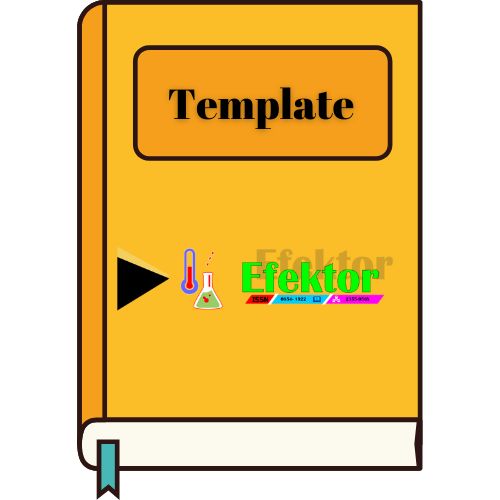Analisis Media Pembelajaran Anak Usia Dini Berbasis Teknologi Masa Pandemi Covid-19
DOI:
https://doi.org/10.29407/e.v8i1.15857Keywords:
learning media, learning videos, whatsapp group and cell phoneAbstract
IT (Information Technology) in education sector during the Covid-19 pandemic becomes great challenges. Information technology among education, educators and school programs are still interesting subjects to discuss. The internet quota from the Ministry of Education and Culture is an effort to help the students in learning process starts from Kindergarten up to Higher level. Combined research method and purposive sampling technique are used in this study. Distributing questionnaires and conducting interviews are implemented to collect the data. In learning process during the Covid-19 pandemic, the teachers or educators in Banyumas Regency began to develop and deepen their much needed capabilities of Information Technology. The results showed that the utilization of IT in Banyumas Regency has already been well provided, had a good internet connection, and gainned quota from the Ministry of Education and Culture. Media can be used are cell phones, laptop, social media such as Facebook, Instagram, whatsapp group, email, zoom, and google meet. Every effort was done to make the education success in every sub-district at Banyumas Regency. From the data obtained, almost 65% used Whatsapp Group effectively through video from cell phone, 20% through Instagram, 5% through YouTube, 5% through zoom, and 5% through google meet. In line with 21st century of education expert has four skills in active communication, collaborative, higher order thinking and problem solving related to education. There are also some other efforts can be done such as increasing learning and developing educational creativity. The success of learning in each component is able to influence each other.
References
Arikunto, Suharsimi. (2010). Prosedur Penelitian (Suatu Pendekatan Praktik). Jakarta: Rineka Cipta.
Barber, M., L. Bird, J. Fleming, E. Titterington-Giles, E. Edwards, and C. Leyland. 2021.Gravity Assist: Propelling Higher Education Towards a Brighter Future. Report of the digital learning and teaching review. London: Office for Students.
B Boholano, H. (2017). Smart Social Networking: 21st Century Teaching and Learning Skills Research in Pedagogy, 7(1), 21–29. https://doi.org/10.17810/2015.45
Bello, A. 2021. “How Test Publishers are Poised to Profit from Pandemic ‘Learning Loss’.” Forbes, April 7. https://www.forbes.com/sites/akilbello/2021/04/07/how-test-publishers-are-poised-to-profit-from-pandemic-learning-loss/
Decuypere, M., E. Grimaldi, and P. Landri. 2021. “Introduction: Critical Studies of Digital Education Platforms.” Critical Studies in Education.
Garba, S. A., Byabazaire, Y., & Busthami, A. H. (2015). Toward the use of 21st century teaching-learning approaches: The trend of development in Malaysian schools within the context of Asia Pacific. International Journal of Emerging Technologies in Learning, 10(4), 72–79. https://doi.org/10.3991/ijet.v10i4.4717
Hanif, M., & Asrowi. (2018). Mobile learning perception of graduate student teachers: A case study in magister program of educational technology of university of Sebelas Maret. International Journal of Multicultural and Multireligious Understanding Journal of Education and Learning, 5(1)
Herlambang, Y. T. (2018). Pedagogik Telaah Kritis Ilmu Pendidikan Dalam Multiperspektif. Jakarta: Bumi Aksara.
Husain, Rusmin, ANto Kaharu. ( 2021). Menghadapi Era Abad 21: Tantangan Guru Pendidikan Anak Usia Dini di Kabupaten Bone Bolango.Volume 5 Issue 1 Pages 85-92. ISSN: 2549-8959 (Online) 2356-1327 (Print).
DOI: 10.31004/obsesi.v5i1.527
Hutami, M. S., & Nugraheni, A. S. (2020). Metode Pembelajaran Melalui Whatsapp Group Sebagai Antisipasi Penyebaran Covid-19 pada AUD di TK ABA Kleco Kotagede. PAUDIA : Jurnal Penelitian Dalam Bidang Pendidikan Anak Usia Dini, 9(1), 126–130
Indriana, Dina. (2011). Ragam Alat Bantu Media Pengajaran. Jakarta: PT Diva Press
Kim, S., Raza, M., & Seidman, E. (2019). Improving 21st-century teaching skills: The key to effective 21st-century learners. Research in Comparative and International Education, 14(1), 99–117. https://doi.org/10.1177/1745499919829214
Kurniawan, Adi Purna, Niswa Nafiah Sartono. (2019). Multimedia Augmented Reality Technology in Daily Basic Knowledge Learning Media for Early Childhood and Kindergarten.Int. Journal of Applied ITVol. 03No.01International Journal of Applied Information Technology. http://journals.telkomuniversity.ac.id/ijait/
Marcomm, M. (2018). Millennials. Jakarta: Fantasious X
Maria, Ulfa Ani Rusilowati, and Wahyu Hasrdynto. Interactive Multimedia Development in The Learning Process of Indonesian Culture Introduction Theme for 5-6 Year Old Children. Journal of Primary Education 8(3)(2019):344–353 https://journal.unnes.ac.id/sju/index.php/jpe/article/view/27929
Sanjaya, Wina. (2014). Media Komunikasi Pembelajaran. Jakarta: Kencana Perdana
Media Group
Selman, Yohanes Fakundo. (2020). Evaluation of The Implementation of 4C Skills in Indonesian Subject at Senior High Schools. Jurnal : JPI, Vol. 9 No. 2, June 2020 DOI: 10.23887/jpi-undiksha.v9i2.23459
Wiyani, Novan Ardy. (2014). Psikologi Perkembangan Anak Usia Dini. Yogyakarta: Gava Media
Yamin, Martinis. 2011. Pardigma Baru Pembelajaran. Jakarta: Penerbit Gaung Persada Press
Yamin, Martinis. 2013. Strategi dan Metode dalam Model Pembelajaran. Jakarta: GP Press Group
Downloads
Published
Issue
Section
License
Authors who publish with this journal agree to the following terms:
- Copyright on any article is retained by the author(s).
- The author grants the journal, the right of first publication with the work simultaneously licensed under a Creative Commons Attribution License that allows others to share the work with an acknowledgment of the work’s authorship and initial publication in this journal.
- Authors are able to enter into separate, additional contractual arrangements for the non-exclusive distribution of the journal’s published version of the work (e.g., post it to an institutional repository or publish it in a book), with an acknowledgment of its initial publication in this journal.
- Authors are permitted and encouraged to post their work online (e.g., in institutional repositories or on their website) prior to and during the submission process, as it can lead to productive exchanges, as well as earlier and greater citation of published work.
- The article and any associated published material is distributed under the Creative Commons Attribution-ShareAlike 4.0 International License













